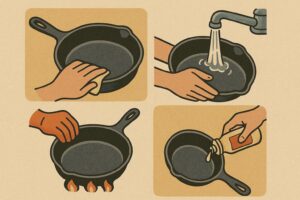In life, we often face challenging decisions about when to persevere and when to let go. The age-old nautical phrase “cut and run” serves as a powerful metaphor for such moments. Originally used by sailors, the term now symbolizes the crucial decision-making point when we choose either to continue investing in a situation or to release ourselves from it. But how do we know when it’s time to ‘cut and run’?
History of the Phrase “Cut and Run”
The phrase “cut and run” is steeped in maritime history. Sailors, facing imminent storms or enemy ships, would sometimes have to make a snap decision to cut their anchor ropes and set sail immediately to avoid disaster. This act was not one of cowardice but of strategic necessity. It represented the understanding that sometimes, the best course of action is a tactical retreat, to live and fight another day.
1. Recognizing When the Cost Outweighs the Benefit
Evaluating Situations
In our lives, we encounter scenarios where continuing on our current path may do more harm than good. This could be in a draining relationship, an unrewarding job, or any situation where the emotional, physical, or financial cost starts to outweigh the benefits. Here, ‘cutting and running’ means making a hard but necessary decision for our well-being.
Risk vs. Safety
Just as sailors had to weigh the risk of staying anchored against the safety offered by fleeing, we too must assess our situations. Are we staying because we’re hopeful of change, or because we’re afraid of the unknown that comes with leaving? Sometimes, the bravest thing we can do is let go.
2. Understanding the Importance of Timing
Acting at the Right Moment
Timing is everything. Acting too soon or too late can have significant consequences. In the nautical context, cutting the rope too early might mean missing a valuable opportunity, while doing it too late could result in disaster. We must learn to recognize the ‘tipping point’ in our situations – the moment when staying put becomes more dangerous than venturing into the unknown.
Impact of Delayed Decisions
Delayed decisions often lead to increased complications. Whether it’s holding on to a failing business venture or a toxic relationship, the longer we wait, the more entangled we become. Like sailors who needed to act swiftly, we must develop the ability to make timely decisions.
3. Listening to Intuition and Experience
Role of Instincts
Intuition is our subconscious mind, drawing on our past experiences and knowledge, guiding us. It’s like an internal compass, similar to the instincts of seasoned sailors who could read the sea and weather conditions. We should trust these instincts, especially when they persistently suggest that it’s time to move on.
Learning from the Past
Our past experiences are invaluable in decision-making. They’re like the numerous voyages a sailor undertakes, each teaching something new about navigating life’s turbulent seas. Reflect on your past – what worked, what didn’t, and use these lessons to inform your current choices.
4. The Value of Adaptability and Flexibility
Embracing Change
Adaptability is a key survival skill, both at sea and in life. Conditions can change rapidly, and our ability to adjust our sails accordingly determines our success. We must be willing to let go of old plans and embrace new directions when necessary.
Navigating Challenges
Life, much like the sea, is unpredictable. Challenges can arise suddenly, and our flexibility in handling these situations often dictates our journey’s success. Letting go of something or someone may be part of navigating these challenges effectively.
5. Accepting the Need for Change and Moving Forward
Emotional and Psychological Aspects
Letting go is not just a physical act; it’s an emotional and psychological process. It involves accepting that change is a part of life. This can be difficult, but it’s essential for growth. Just as a ship leaves its harbor to explore new horizons, we too must be willing to move forward.
Sailing Towards New Horizons
Every decision to ‘cut and run’ is also a decision to start anew. It’s an opportunity to set sail towards new experiences, relationships, and opportunities. It’s about not being anchored by our past but being driven by the potential of our future.
Have a Sharp Mind and a Sharper Knife
The decision to ‘cut and run’ is never easy. It requires courage, timely judgment, and a willingness to embrace change. But just as it was for sailors of old, this decision can be the difference between staying mired in a storm and sailing towards sunnier shores. In life, as in sailing, knowing when to let go is as important as knowing when to hold on.








